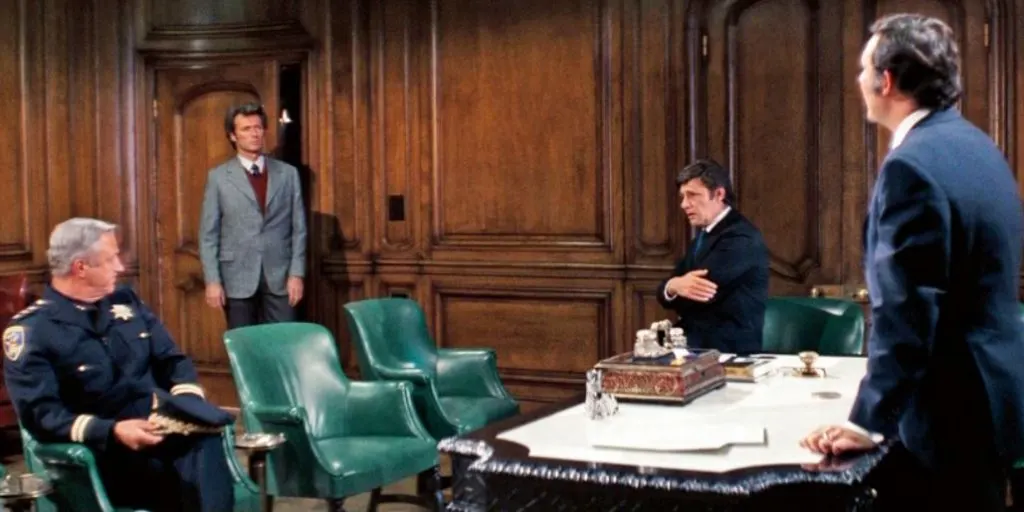One of the most amazing structures in San Francisco is also the most important government building in the city.
Let’s take a closer look at some of the most interesting facts about San Francisco City Hall, a fascinating city hall building featuring a monumental dome.
1. The building is located in the most important area in the city
The San Francisco City Hall is the most important building in the city as it’s both the seat of the government of the City as well as the County. It’s located in an area called the “Civic Center” which is home to multiple important buildings in the city.
Apart from buildings used by the local government, it’s also home to the War Memorial Opera House (located just west of City Hall), various theaters, the Public Library of the city, and the Asian Art Museum.
This area in the city is situated just a few kilometers to the southeast of the city’s Financial District, and just a few blocks north of the intersection of two of the cities main thoroughfares, Market Street and Van Ness Avenue.

2. It replaced the original City Hall in the early 20th century
The current building isn’t the original City Hall. It was preceded by another monumental building that was completed in the year 1899 after being planned and constructed for nearly 3 decades.
One of the most remarkable facts about San Francisco City Hall is that this original building was actually much larger than the current monumental structure. It also featured an adjoining building that housed the city’s Hall of Records.
Unfortunately, the 1906 San Francisco Earthquake, which pretty much flattened the entire city, also destroyed this magnificent building, just 7 years after it was completed.

3. It’s San Francisco’s epitome of a particular architectural movement
The current city hall wasn’t built in the same location as the old building, which was situated at the location of where the public library and U.N. square were constructed and stand today.

The design, however, followed the principles of the Neoclassical artists in an attempt to revive architectural styles from antiquity. The late 19th and early 20th centuries also saw the rise of a movement called the “American Renaissance” or “City Beautiful Movement.”
This movement, which attempted to introduce architectural grandeur into the city to elevate the general living conditions of its citizens, wasn’t as prominent in San Francisco as in the other U.S. cities such as Chicago or Washington D.C.
Regardless, the building was designed from this concept and eventually turned out to become one of the greatest Beaux-Arts monuments in San Francisco.

4. The building’s architect designed a lot more structures in the city
The main architect of the building was Arthur Brown Jr. (1874-1957), one half of the Bakewell and Brown architectural firm he started with his colleague John Bakewell Jr. (1872-1963).
Both men had a great stake in the architectural design of buildings all around the city, even though the City Hall can be considered Brown’s ultimate masterpiece.
He also designed the War Memorial Opera House (1932), which is located just west of the City Hall, the Coit Tower on Telegraph Hill (1933), and the San Francisco Art Institute (1925).

5. It took over 3 years for the building to be completed
The preparation works of the new building were started on April 5, 1913, and the cornerstone eventually ended up being laid on October 25 of that same year. This was after a bond bill was issued of USD 8.8 million and the cost of the project had been estimated to be anywhere between $3.5 and USD 4 million.
The final stone of the building ended up being laid on March 31, 1916, and the building was officially completed on July 28, 1916, the day that the final scaffolding was removed.

6. The dome was inspired by some famous domes in Paris
The most impressive feature of the building is its magnificent dome. To get inspiration, Brown looked at a couple of famous buildings in Paris with a similar magnificent crown.
There are copious amounts of buildings with a fantastic design in Paris so he didn’t have to look that far. His eye was clearly set on the magnificent Baroque domes designed by Louis XIV’s architect, Jules Hardouin-Mansart (1646-1708), who designed the domes of both the Val-de-Grâce church and Les Invalides.
Especially the gilded dome of Les Invalides, the tallest in all of Paris, bears a striking resemblance to that of San Francisco’s City Hall, don’t you think?

7. The dome is higher than its more famous brother in Washington D.C.
The dome of the City Hall in San Francisco isn’t the only astounding dome in the country. The most famous of all is that of the Capitol Building in Washington D.C., one that was clearly inspired by the Tempietto in Rome (little temple), designed by Donato Bramante in the early 16th century.
Even though it appears that the dome in Washington D.C. is higher, this isn’t actually the case. The one in San Francisco reaches a total height of 93.73 meters (307.5 feet), which makes it 5.8 meters (19 feet) taller than the one in Washington.
It also has a total diameter of 34 meters (112 feet) and rests on 8 massive pillars, each 18 meters (60 feet) long and going up to 2.7 meters (9 feet) deep into the ground to provide stability.
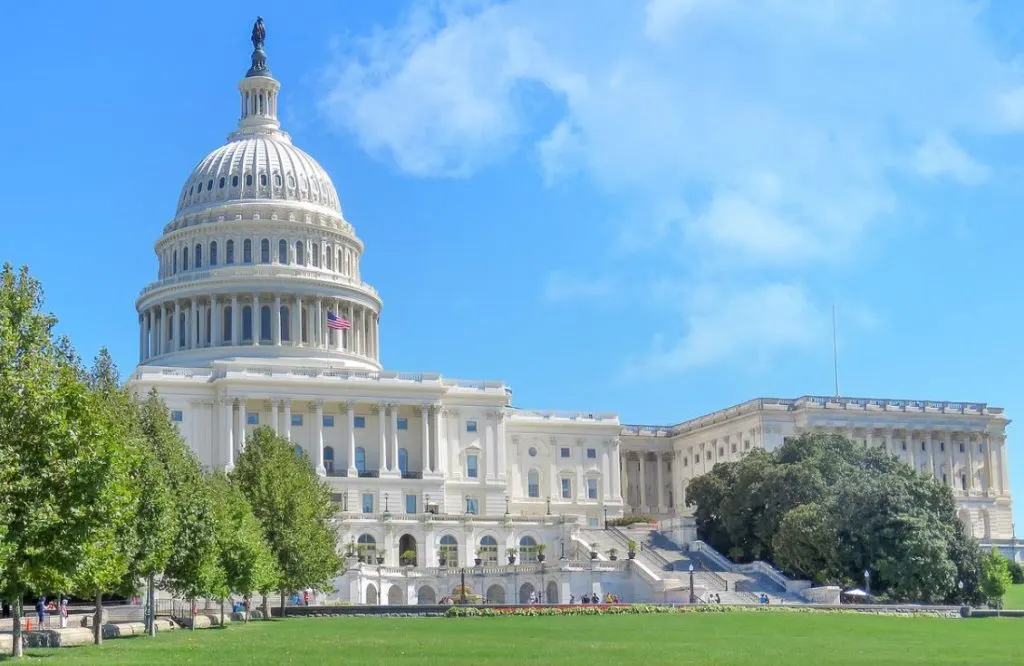
8. The City Hall is fronted by 2 monumental public squares
To the east of the building, we can find 2 major public squares that adjoin each other. The one directly in front of the City Hall is called the “Civic Center Plaza” while the one adjoining it is called the “U.N. Plaza.”
The square in front of the building covers a total area of 1.83 hectares (4.53 acres) and has been remodeled several times in its history. A new redesign has yet again been scheduled but nothing has been done yet as of today.
The United Nations Plaza covers an area of 1.1 hectares (2.6 acres). It was dedicated in 1975 to commemorate the signing of the Charter of the United Nations on June 26, 1945, at the City Hall, something that effectively created the organization.
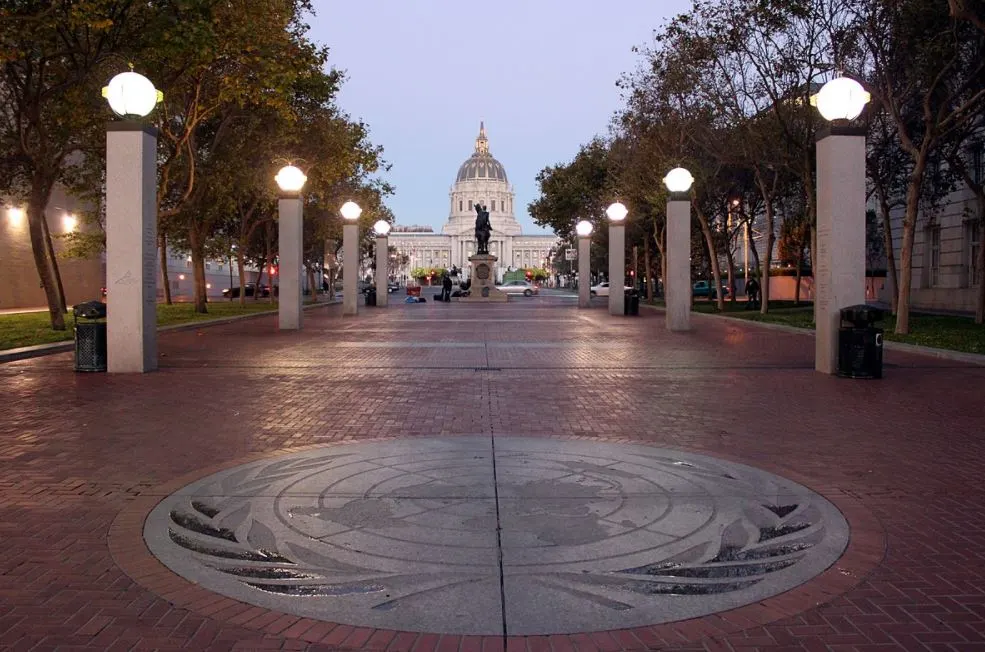
9. It has been made earthquake-proof following the 1989 calamity
One of the most astounding facts about the San Francisco Hall is that it wasn’t until another major earthquake struck the city that the building was reinforced to become earthquake-proof.
The dome was slightly damaged and it was twisted about 10.2 centimeters (4 inches) at its base because of the Loma Prieta earthquake of 1989.
Following this calamity, a team of engineers was hired to create a base isolation system which ensured another dramatic event wouldn’t have the same result as in 1906. This setup pretty much decouples the superstructure from the substructure and the integrated structural elements form a protective layer to avoid damage.
The upgrade was completed between 1994 and 1998 and it held the record as the world’s largest structure featuring a base-isolation protection system.
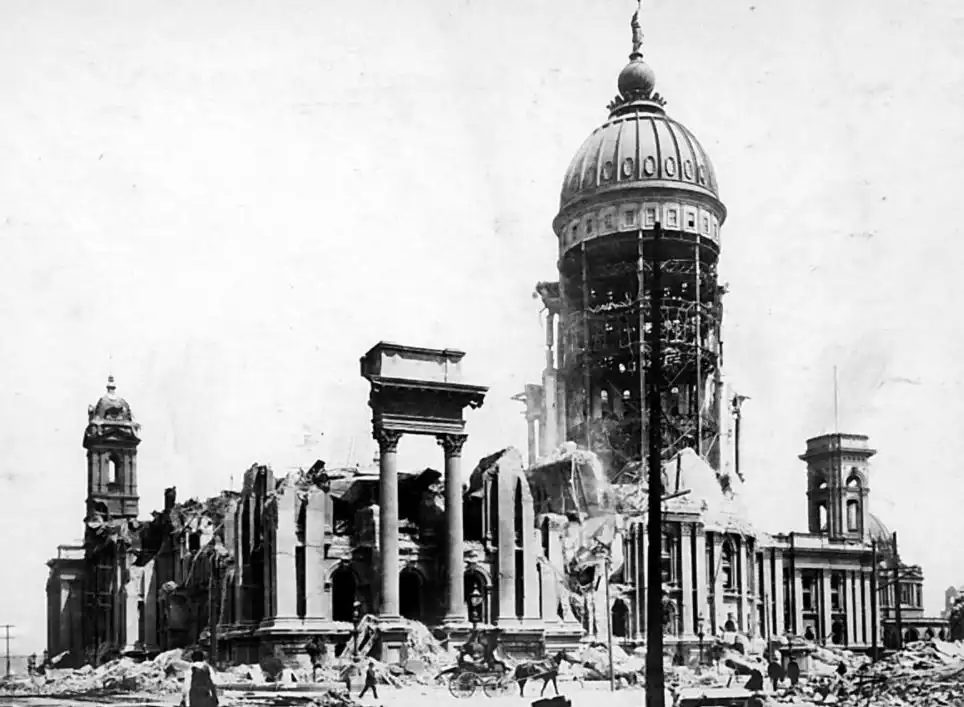
10. The Rotunda of the building is an amazing open space
The magnificent dome isn’t the only architectural feature worth admiring. The most astounding feature inside the building is without question an area referred to as “The Rotunda.”
The centerpiece of this area is the Grand Staircase which is located right across from the Mayor’s Office, a room which is located on the second floor of the building.
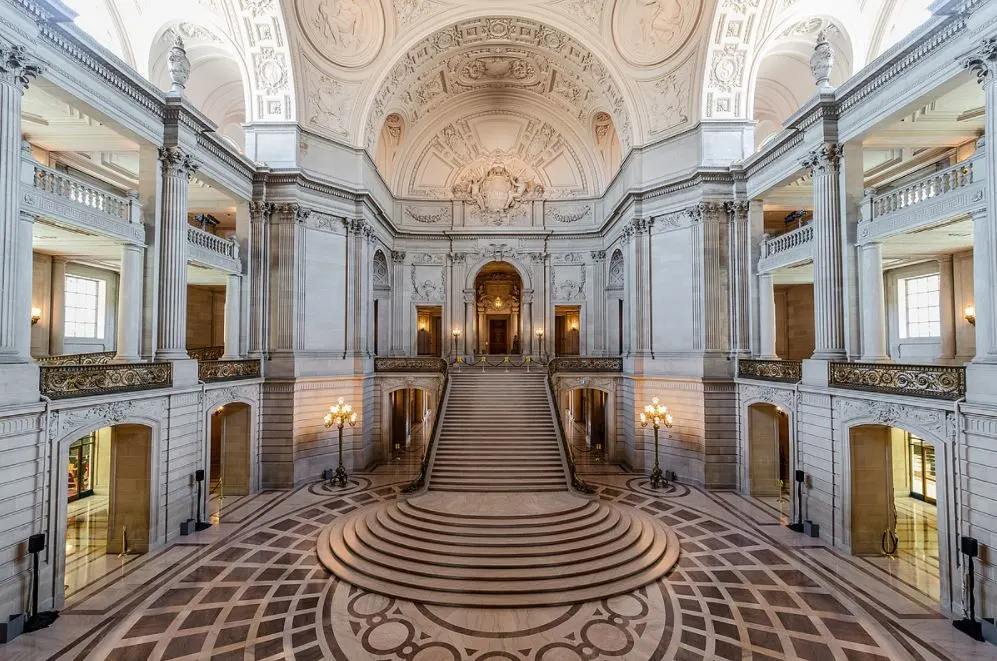
11. The final scene of Raiders of the Lost Ark was filmed here
Did you know that San Francisco City Hall is often referred to as the “most famous movie set in the city?” Perhaps the most famous example of the building being used as a film location is the final scene of the first part of the Indiana Jones movie called “Raiders of the Lost Ark” (1981).
Even though the scene in the movie is actually taking place in Washington D.C., it was actually shot on the Grand Staircase of the City Hall in San Francisco.

12. A Dirty Harry scene was actually shot inside the Mayor’s office
Who can forget the legendary no-nonsense SF police officer (played by Clint Eastwood) “Dirty” Harry Callahan, right?
As he chases a demented madman all across the city, a character derived from the Zodiac Killer, the tactics he uses to catch the killer are being questioned.
This legendary scene actually took place in the real Mayor’s office at San Francisco City Hall. The Mayor had been so nice to rent out his office to the filmmakers during an extended 3-day weekend so they could shoot the scene, pretty amazing!
